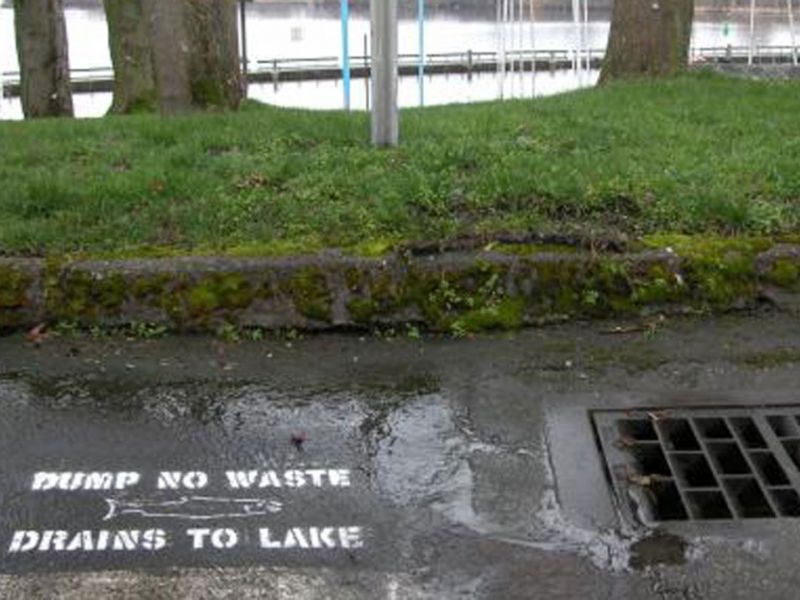Stormwater & Urban Runoff

Why should I bother recycling motor oil? What happens if I don’t?
Best case, your oil is burned as fuel. Worst case, your oil doesn’t get to a disposal center. Remember, oil floats on top of the water, and if your oil gets loose, especially during a rain storm, it will drift away downstream, towards the ocean. Remember the recent oil spill in the Gulf of Mexico? That’s causing a lot of chaos.
So? A little bit of oil never hurt anyone.
That is debatable, but in any event, the problem is that it isn’t a little bit of oil. It’s a lot. If everyone in California just let their motor oil wash away, for one year, the amount would be over 500 million gallons. Oil is one of the most harmful and common water contaminants; 1 gallon of used oil has the potential to contaminate 1 million gallons of fresh water. This has led to used motor oil accounting for 40% of the pollution in America’s waterways.
I recycle my oil. So, I’m in the clear, right?
Maybe. However, other substances can also wreak havoc on an ecosystem via water, substances such as soap.
Wait…soap?
A common active ingredient in many antibacterial soaps, triclosan, has been linked to health problems in frogs.
What else shouldn’t go into stormwater?
Fertilizers, pesticides, lye, window cleaner, anti-freeze, bleach, horse manure, pet waste, trash, and more. A good rule is that if you wouldn’t eat it, it shouldn’t go into the water. If any of the above gets washed away, it’s a clear shot all the way to the ocean, with plenty of opportunities to cause environmental upheaval while en route.
What do all of those do to the environment?
- Soap: In the case of triclosan soap, the soap interferes with the metabolism of frogs.
- Fertilizer: Nitrogen-based fertilizers can lower the oxygen content of ocean water. That means that fish suffocate. Also, water contaminated with fertilizers can cause “blue baby syndrome“, which is potentially deadly in infants if untreated.
- Pesticides: These, depending on if they are herbicides or insecticides, will kill waterborne plants or bugs. Also, pesticides are dangerous to humans as well. If pesticides are carried into lakes or other enclosed bodies of water, they linger for extremely long times, measured in decades.
- Lye: Lye is typically used as an oven cleaner. When flesh is exposed to lye, chemical burns result. This substance is almost certainly lethal if ingested in large quantities.
- Window cleaner: Windex, for example, contains, alcohol and ammonia. These are not good for living creatures and can cause death if ingested.
- Anti-freeze: Toxic, even in small amounts. Also changes the freezing point of the water that it is added to.
- Bleach: Kills fish and other animals. Also toxic to humans.
- Horse manure/pet waste: Contains bacteria that can disrupt ecosystems.
- Trash: Often mistaken for food and eaten by birds, turtles, and fish, resulting in death by starvation. Certain kinds of trash, such as plastic, can release toxins as they break down in the water.
Wait… Doesn’t stormwater get processed?
No, it usually does not. Stormwater, unlike drinking water, is not required to pass quality inspections, and typically passes directly out to sea via drains, streams, and rivers. And while some areas treat stormwater part of the year, the facilities for this are limited and can only process so much before releasing excess as is.
So what can I do?
By keeping dangerous substances out of stormwater, you effectively prevent their effects. Using natural, environmentally safe alternatives that break down in nature is a start. Many alternatives are available, a number of which you can make yourself. Recycling or properly disposing of the synthetic substances that you must use is another part.
